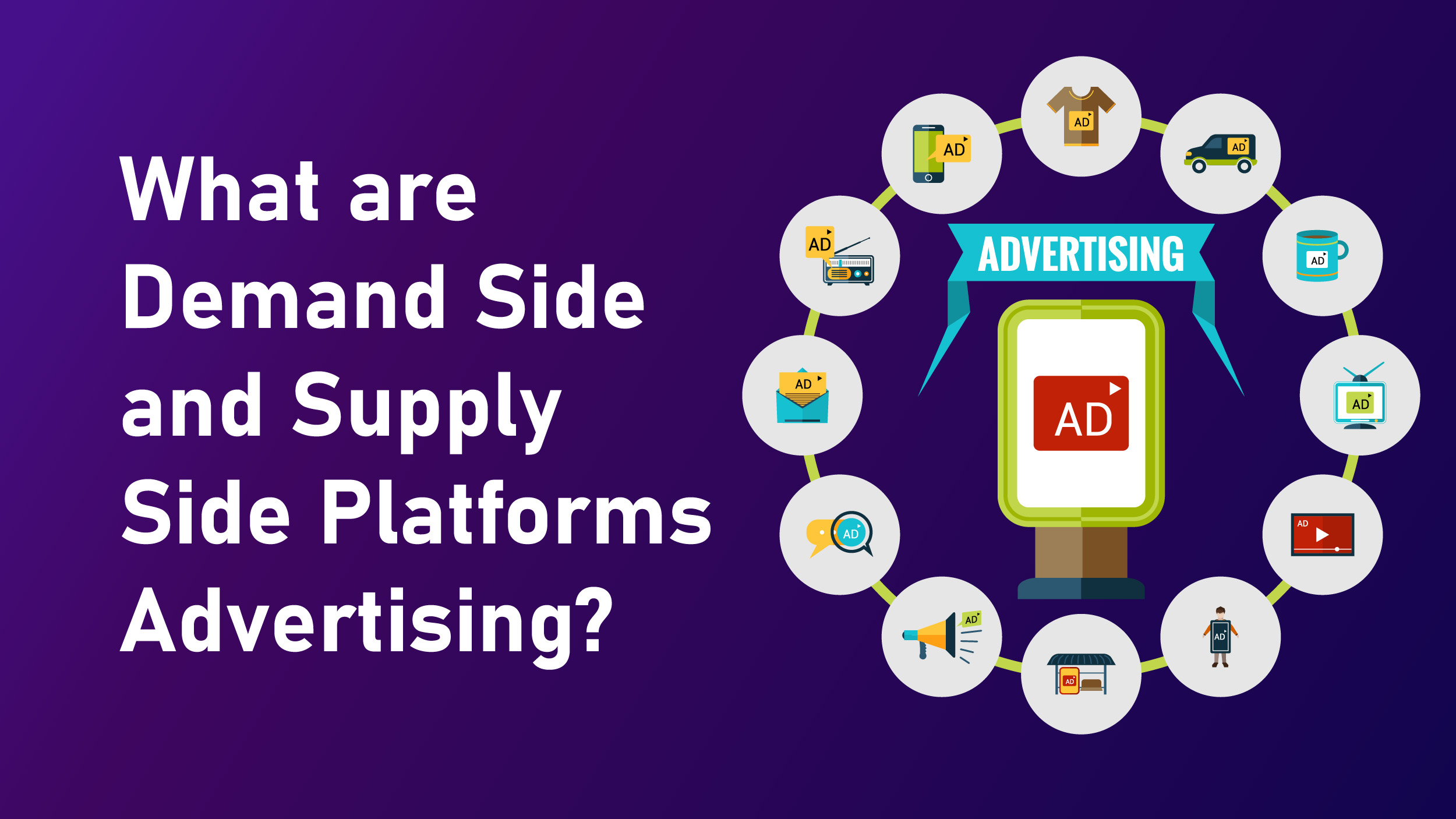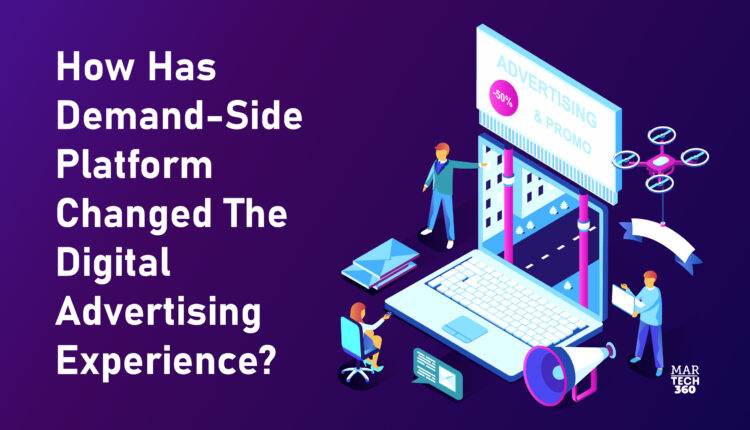In the past, the process of buying and selling ads was far from today’s ease. The online advertising market has evolved, simplifying the transaction of ad space through centralized ad exchanges. Supply-side platforms and demand-side platforms have played a crucial role in this evolution. Publishers now have expanded access to advertisers, and advertisers benefit from more affordable rates and improved tools for monitoring ad effectiveness.
Today, you can’t just use data and tools to achieve your marketing objectives. Marketers now need to set up campaigns quickly and manage them with convenience. This is possible by using a demand-side platform because now they don’t have to invest time and energy in something that can be done by an automated machine. So, how does a DSP work and what does it really mean? Let’s dig in!
What are Demand Side and Supply Side Platforms Advertising?
 Demand-side platforms (DSPs) and supply-side platforms (SSPs) are integral components of programmatic advertising, an automated method of buying and selling digital ad space. Here’s a breakdown of their roles:
Demand-side platforms (DSPs) and supply-side platforms (SSPs) are integral components of programmatic advertising, an automated method of buying and selling digital ad space. Here’s a breakdown of their roles:
A Demand-side platform (DSP) is a software tool employed by advertisers and media buying agencies to acquire ad space from various publishers and ad exchanges. DSPs offer features for campaign management, audience targeting, and real-time bidding. By harnessing data and algorithms, advertisers can efficiently reach their desired audience and make informed purchasing decisions.
On the other hand, a Supply-Side Platform (SSP) is a software system utilized by publishers to oversee and sell their ad space to advertisers. SSPs link publishers with multiple ad exchanges and DSPs, broadening their potential buyer base. They equip publishers with tools to manage inventory, establish pricing and targeting criteria, and optimize the sales process for maximum revenue.
How Does a DSP Work?
As mentioned above, DSPs operate through programmatic advertising, which is the automated buying and selling of advertisements in real-time. This real-time bidding allows the auctioning of ad spaces within milliseconds. Further, the functioning of a demand-side platform is divided into two segments. First, the advertiser begins uploading creatives, setting up targets, and allocating a budget for their campaigns. All of this is easily done from the DSP dashboard.
Following the upload of the campaign creative, the DSP searches its network of publishers for sites and mobile applications that meet the advertiser’s requirements and submits a bid for placement. Finally, the DSP resolves the bid, places the ad, and handles payment – all of this happens in the blink of an eye.
The key benefit of employing a DSP is that it simplifies and reduces the cost of the overall digital advertising experience. All of your digital ads can be managed, tracked, and optimized in one place. Plus, a demand-side platform allows you to advertise on several networks, including the big publishers, as well as others. A DSP allows you to have a better global reach, thanks to the increased number of networks.
While DSPs provide campaign management tools to advertisers, evaluating performance across a demand-side platform can be difficult. With more networks using DSPs, it’s more important than ever to assess and measure advertising performance in the long run.
In 2020, 85% of digital display advertising spending in the US was conducted using programmatic technology. Nowadays, the majority of online advertising occurs through real-time bidding and direct deals in a programmatic fashion.
Why Use a Demand-Side Platform?
The primary motivation behind using a DSP lies in its ability to simplify and optimize your digital advertising endeavors while reducing costs. It centralizes the control, tracking, and optimization of all your digital ads, allowing you to manage entire campaigns across multiple sites from a single dashboard. This means you can seamlessly display ads on various platforms like Google and Facebook within a single campaign, whereas previously, these would have been separate campaigns.
DSPs also enable you to access numerous networks, including major publishers, thus expanding your global reach. Furthermore, DSPs often collaborate with third-party data providers, offering enhanced tracking and reporting capabilities compared to individual networks. The targeting options are highly personalized, resulting in improved conversion rates. When selecting a platform, consider factors such as the number of ad exchanges the DSP has access to, costs, training options (full-service or self-service), support, and user-friendliness.
Top 3 Demand-Side Platform Examples
 As we are already in 2023, it’s prudent to explore some of the leading DSPs that hold significant promise for advertisers and marketers alike. Here are some of the top demand-side platform examples you can consider:
As we are already in 2023, it’s prudent to explore some of the leading DSPs that hold significant promise for advertisers and marketers alike. Here are some of the top demand-side platform examples you can consider:
1. Basis Technologies
Basis Technologies, an omnichannel DSP, leverages AI and machine learning to optimize ad campaigns. It offers hyper-local audience targeting, access to top exchanges, and over 25,000 audience segments from 30+ data providers.
2. Google Marketing Platform
Google Marketing Platform streamlines advertising and analytics for effective marketing. It offers products like Campaign Manager 360 and Display & Video 360. This platform enables efficient cross-channel ad management, saving time and enhancing campaign performance. Its standout feature is flexibility, allowing users to integrate third-party features for tailored campaign management and measurement.
3. Knorex
Knorex is an all-in-one advertising platform that automates personalized marketing across various channels, devices, and ad formats, including Google Search, Facebook, Instagram, and LinkedIn. It employs AI to dynamically predict and adjust ad budgets in real-time, maximizing efficiency.
Final Thoughts
The evolution and widespread adoption of demand-side platforms advertising has indelibly transformed the landscape of the digital world. The efficiencies they bring to ad buying, targeting precision, and campaign optimization are nothing short of revolutionary. Marketers now wield powerful tools that enable them to reach the right audience, at the right time, with the right message.
The ability to harness data-driven insights has elevated advertising strategies to new heights, ensuring that resources are utilized effectively for maximum impact. As we look ahead, it’s clear that DSPs will continue to be the linchpin of successful digital advertising campaigns, shaping the future of the industry in innovative and exciting ways. Embracing this technology is not just a competitive advantage; it’s a necessity for any brand striving to thrive in the dynamic digital landscape.


Comments are closed.